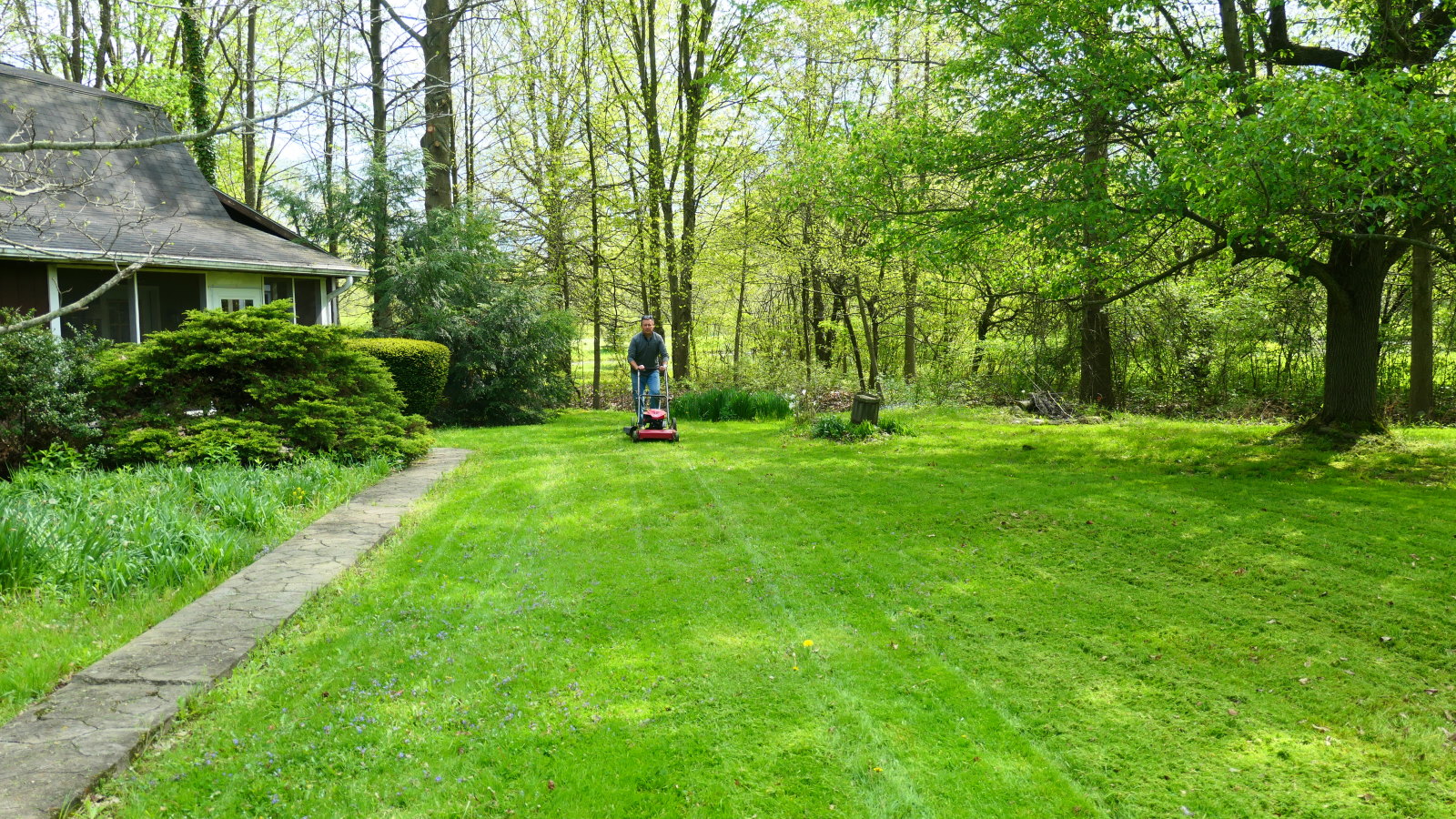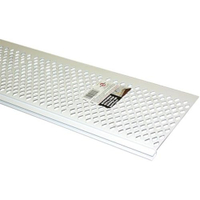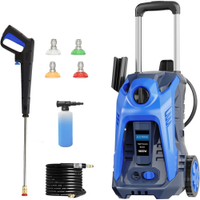How to prepare your home for spring – 8 tasks to transition your home from winter to spring
Don't get caught unprepared when spring arrives; prioritize inspecting, organizing, and cleaning your home to ensure it's ready for the new season


Every new season brings a checklist of essential tasks to either reset your home after the last season or prepare it for the next, and springtime is no exception.
The transition from colder months to the warmer weather that springtime brings is the ideal time to tackle some spring home maintenance jobs. These will ensure your home runs more safely and smoothly and is inviting for the months ahead.
Preparation for the upcoming season involves more than just routine tasks, it's about preparing for the change in weather and how you use your home, as well as anticipating and addressing potential sources of damage and discomfort. By taking these proactive steps, you can ensure your home is functional and beautiful all season long.
How to prepare your home for spring
If you are wondering where to start spring cleaning, the best approach may be to start with the foundational aspects of your home, including cleaning the gutters, AC, chimney, outdoor area, and some other key maintenance jobs.
Tackling these key tasks before addressing less urgent aspects will allow you to spring clean without getting overwhelmed.
1. Keep out bugs and insects

'Springtime means new life, and unfortunately, that applies to many pests as well,' says Brett Bennett, Director of Operations at PURCOR Pest. 'So, an important part of preparing your home for spring is making sure it’s as pest-proof as possible.
'While doing your spring cleaning, keep an eye out for stink bugs, mice, spiders, and any other pests specific to your area. It’s always best to catch these problems before they grow into a full-blown infestation.
'Check to see that your home is properly sealed so that insects and rodents can’t find their way inside. Use expandable foam, mesh barriers, and window screens to block potential entry points.
'Do thorough decluttering throughout your home – including spaces like your attic, basement, and cabinets, and make sure all of your food is sealed up well.'
You can also use DIY deterrents and set traps for pests, such as homemade remedies to get rid of flies or a Venus fly trap near entry points like windows.
2. Inspect and clean gutters

The best time to clean gutters and downspouts to maintain the overall condition of your home is during spring. This involves removing debris that may have accumulated over winter and eliminating sticky residue and allergens as the spring pollen-heavy season begins. It's crucial to complete this task before the onset of spring showers and summer storms that put these systems under pressure.
'Clogged gutters can cause water to not flow properly from the home and lead to foundational damage, leaky roofs, and attract pests,' warns Josh Story, home inspector and owner of WIN Home Inspection.
Cleaning these during springtime protects your home from mold, mildew, interior water damage, and structural damage. It also ensures that your home's interior remains free from allergens that can wash into your home's drainage systems.
'It’s important for homeowners to ensure they have a sturdy ladder when cleaning out the gutter and to check that their downspouts are directing water away from the foundation,' recommends Josh Story. Installing gutter guards can also be a helpful addition to prevent debris build-up year-round to keep water flowing freely and prevent clogs.
Amerimax Snap-in Filter Gutter Guard | $50.41 from Amazon
Installing gutter guards can prevent your gutters from accumulating larger debris during winter months, making your spring cleaning easier.
3. Dust and pollen-proof your home

With the arrival of spring, flowers begin to bloom, and the temperature begins to rise. Alongside this, the presence of allergens and dust particles in your home is likely to increase. This is primarily due to the surge in pollen levels outdoors and the reactivation of fans, which may have been unused since the previous summer.
As a result, in spring it's essential to adopt cleaning tips for allergy sufferers to reduce dust, pollen, and mold allergens to prepare your space to be more comfortable in spring.
To allergy-proof your home, prioritize thorough cleaning, removing dust from your fans, blinds, and window sills, and cleaning or changing your air purifier and dehumidifier filters.
You can also pollen-proof your bedroom by minimizing clutter and switching out wintery materials, such as velvet, wool, or down that can easily trap pollen in exchange for hypoallergenic materials, including lighter, tight woven fabrics and dust mite-proof covers. For example, you can use this Ultimate Zippered waterproof mattress encasement from Amazon to keep pollen and other allergens from embedding into your sheets.
By doing this, you can manage seasonal allergies and create a healthier and more comfortable living environment during the spring months.
4. Clean your air conditioners

'ACs usually have no use in winter; therefore, these appliances remain closed and unused for a long time. Starting them in late spring or summer without properly cleaning or servicing them is a big mistake because they will circulate dust that has built up throughout your home, and they might not even start,' warns Nick Hedberg, home improvement expert at As Is Homebuyer. 'Not a good way to commence your summers, right? So it's better to get them cleaned in spring!'
Cleaning your AC system to prepare for spring is key to improving your indoor air quality in the transition from winter while ensuring its optimal performance and extending its longevity. To do this, you should replace or clean the filters, vents, and registers and inspect and clean the outdoor unit.
Josh Mitchell, HVAC and plumbing technician and the owner of Air Conditioner Lab says: 'Over the winter, air filters tend to accumulate dust and debris, hindering airflow and reducing air quality. Swapping out these filters is a simple yet vital step in maintaining optimal HVAC system performance.
'Debris piled up around outdoor HVAC units can impede airflow and strain your system. Keeping the area clear ensures efficient operation during the warmer months.'
5. Check for roof damage

Inspecting and repairing any damage to your roof is an important part of preparing your home for spring. After the harsh elements of winter, your roof may have issues such as loose or missing shingles, leaks, or weakened areas.
'Check for roof damage from snow or ice, and make any necessary repairs to reduce the possibility of leaks,' recommend the experts at Travelers Home Insurance. 'If you have a skylight, check outside for a buildup of leaves and debris. Also, check the indoor ceiling for signs of leaks.'
Fixing any problems with your roof before they escalate will ensure it remains secure and watertight, which is essential during spring showers. Plus, this will prolong your roof's lifespan, saving you money on costly repairs in the long run.
6. Adjust humidity levels

Maintaining the best humidity levels for your home year-round is key for creating a comfortable, healthy indoor environment, and with the humidity and temperature increase in spring, it's important to make adjustments to your indoor humidity levels.
'During the warmer months, keeping humidity levels at the higher end of the spectrum (40% to 50%) can help make the air feel cooler and more comfortable, reducing the need to lower the thermostat and help cut your energy bills,' says Josh Michell.
So, monitor your hydrometer to see if your humidity is shifting out of this ideal range, and alter it accordingly.
7. Cleaning your outdoor flooring

'Part of preparing your home for spring is getting ready to enjoy your yard, and this starts with your spring patio prep,' says Rafi Friedman, President of Coastal Luxury Outdoors.
'Especially after a long winter with heavy rain or snow, you'll want to take the time to clean your patio with a pressure washer to get rid of any dirt and debris. This is especially important for pool decks; any dirt on your deck will end up in your pool unless you clean it up first.
'Plain water is enough for most patios, but if you have moss, stains, or discoloration, you'll want to use a stain remover like OxiClean Outdoor from Amazon. This stuff can be used to spot treat the stains and rinsed away with plain water. It won't damage finishes or your lawn, either.'
Electric Pressure Washer | $169 from Amazon
This power washer comes with a 25FT hose and 4 quick connect nozzles, perfect for sprucing up your yard ahead of outdoor spring activities.
8. Inspect and clean your chimney

In contrast to your AC, which requires cleaning in spring due to its disuse in winter and upcoming use in spring, your chimneys will need to be inspected and cleaned after a long season of being active.
Over time, soot, debris, or creosote deposits (a flammable residue) can accumulate inside your chimney from burning wood or other fuel. So, to prevent any fire hazards, maintain optimal airflow and efficiency when using your fireplace or wood burner in cooler spring evenings, and ensure your stove is ready for next winter, having it inspected and cleaned to remove any buildup from the previous season is necessary.
Finally, before you start using them regularly, test your outdoor faucets and sprinkler systems for any signs of damage or leaks. It's not uncommon for these to sustain damage over the winter months. Once all these tasks are complete, you can rest easy that your home is ready for spring and all it brings.
Sign up to the Homes & Gardens newsletter
Design expertise in your inbox – from inspiring decorating ideas and beautiful celebrity homes to practical gardening advice and shopping round-ups.

Lola Houlton is a news writer for Homes & Gardens. She has been writing content for Future PLC for the past six years, in particular Homes & Gardens, Real Homes and GardeningEtc. She writes on a broad range of subjects, including practical household advice, recipe articles, and product reviews, working closely with experts in their fields to cover everything from heating to home organization through to house plants. Lola is a graduate, who completed her degree in Psychology at the University of Sussex. She has also spent some time working at the BBC.
-
 Martha Stewart's 'ideal kitchen' is a hub of smart storage and strategic decorations – it's surprisingly easy to recreate in the smallest of spaces
Martha Stewart's 'ideal kitchen' is a hub of smart storage and strategic decorations – it's surprisingly easy to recreate in the smallest of spacesMartha's TV set kitchen features a butler sink with hidden storage, boundless drawers, and decorative shelves for easy access
By Hannah Ziegler
-
 Lawn experts recommend these 4 steps to fix an overgrown lawn, plus they reveal one golden rule never to break
Lawn experts recommend these 4 steps to fix an overgrown lawn, plus they reveal one golden rule never to breakTransform your grass from an untidy mess to a beautiful lawn - but don’t rush the process
By Drew Swainston

